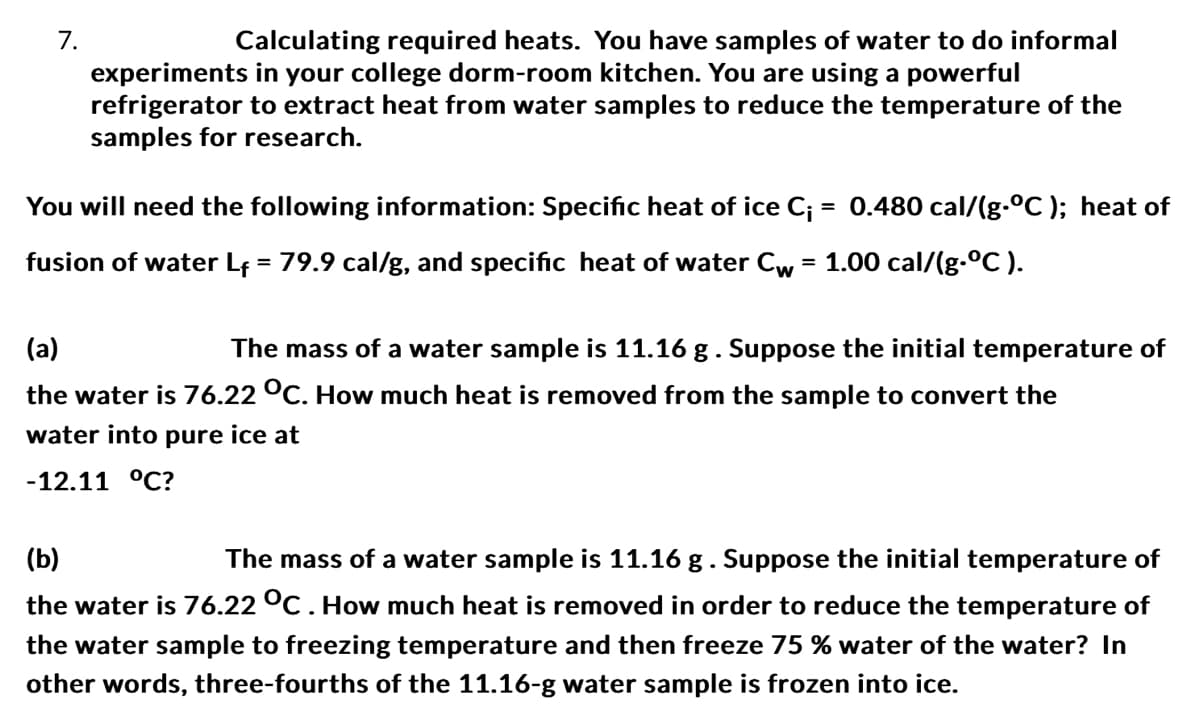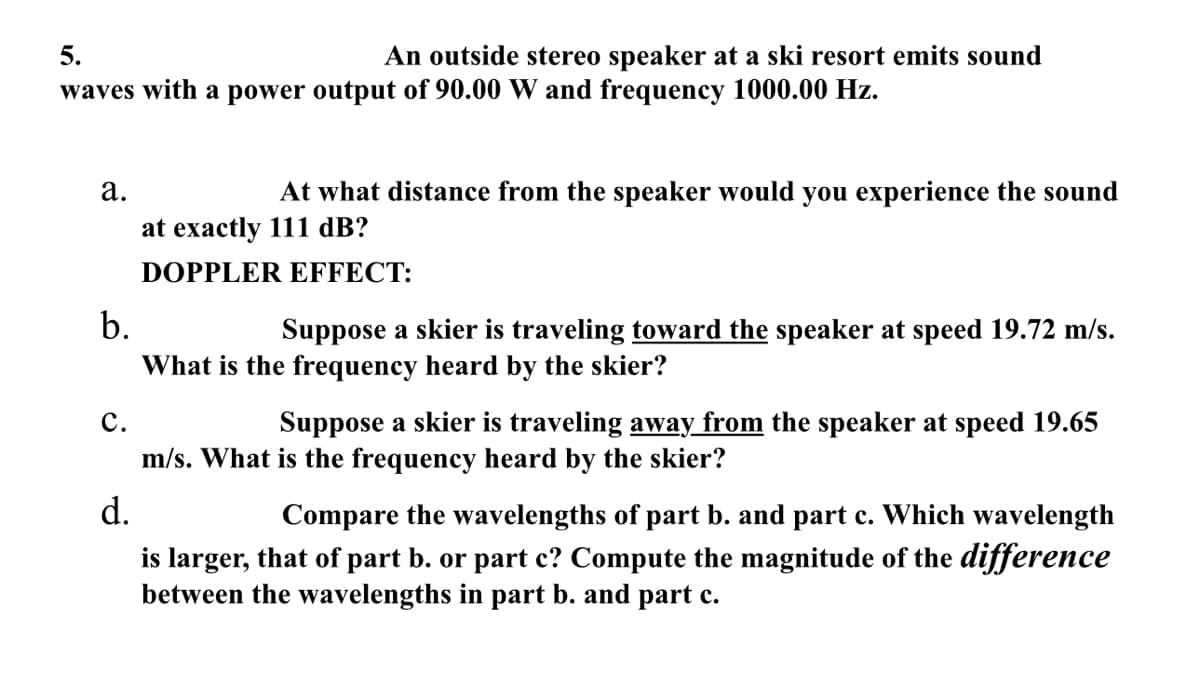7. Calculating required heats. You have samples of water to do informal experiments in your college dorm-room kitchen. You are using a powerful refrigerator to extract heat from water samples to reduce the temperature of the samples for research. You will need the following information: Specific heat of ice C; = 0.480 cal/(g-ºC); heat of fusion of water L₁ = 79.9 cal/g, and specific heat of water Cw = 1.00 cal/(g-°C). (a) The mass of a water sample is 11.16 g. Suppose the initial temperature of the water is 76.22 °C. How much heat is removed from the sample to convert the water into pure ice at -12.11 °C? (b) The mass of a water sample is 11.16 g. Suppose the initial temperature of the water is 76.22 °C. How much heat is removed in order to reduce the temperature of the water sample to freezing temperature and then freeze 75 % water of the water? In other words, three-fourths of the 11.16-g water sample is frozen into ice.
Energy transfer
The flow of energy from one region to another region is referred to as energy transfer. Since energy is quantitative; it must be transferred to a body or a material to work or to heat the system.
Molar Specific Heat
Heat capacity is the amount of heat energy absorbed or released by a chemical substance per the change in temperature of that substance. The change in heat is also called enthalpy. The SI unit of heat capacity is Joules per Kelvin, which is (J K-1)
Thermal Properties of Matter
Thermal energy is described as one of the form of heat energy which flows from one body of higher temperature to the other with the lower temperature when these two bodies are placed in contact to each other. Heat is described as the form of energy which is transferred between the two systems or in between the systems and their surrounding by the virtue of difference in temperature. Calorimetry is that branch of science which helps in measuring the changes which are taking place in the heat energy of a given body.


Trending now
This is a popular solution!
Step by step
Solved in 6 steps with 5 images









